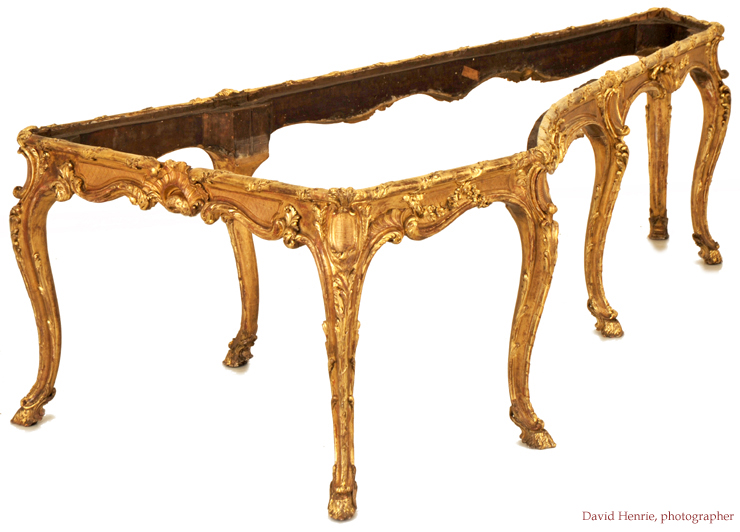![]()
A Franco-Flemish double-manual harpsichord,
![]()
The stand of
the Franco-Flemish harpsichord

This photograph shows the stunning stand underneath the
Franco-Flemish harpsichord. The escutcheons at the summit of the legs are
ribbed and framed with elegant foliate decoration. The cabriole legs have
elaborate goat feet (cabriole means 'to leap like a goat').
There are the usual scrollwork, scallops, foliate and flower decorations moulded
into the gesso all of which are typical of the high French roccoco. The height of the stand is
greater than normal and raises the instrument into a slightly higher playing position
than is usual. This may have been done to accommodate the luxurious ladies
gowns and petticoats so that they could be seated normally while playing the
instrument. Visually the raised position makes the instrument look particularly striking
and imposing.
The stand is very fine and beautifully carved and gilded. Like the case of the instrument it has been widened on the cheek side to accommodate the compass extension of 1786 so that the curve of the actual bentside of the instrument no longer matches the curve of the stand. This strongly suggests that the stand, in a high roccoco style, is contemporary with the outer-case decorations and paintings of 1750. The height of the stand is greater than normal and raises the instrument into a slightly higher playing position than normal.
![]()
Go back to the main page of this section
![]()
Important
Features of this harpsichord
![]()
A brief history of the musical and decorative states of the Franco-Flemish harpsichord
![]()
Details of
the original state of the instrument
![]()
Details of the eighteenth-century states of this harpsichord
Details of the modern history of this harpsichord
![]()
A problem encountered in the ethical restoration of this harpsichord
![]()
Return to the main page of this section
![]()
![]()